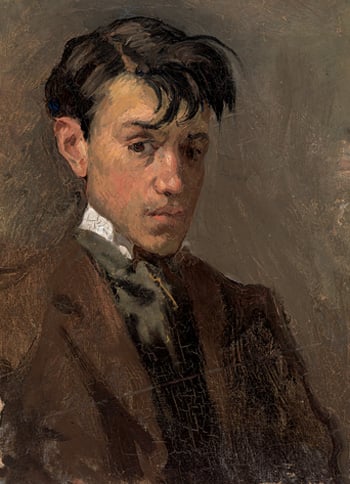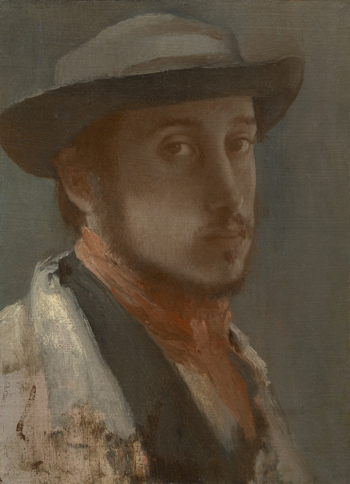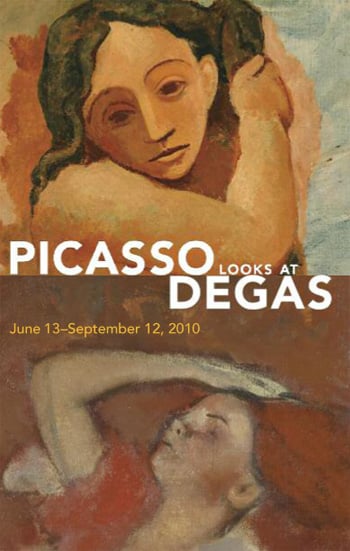JUNE 13–SEPTEMBER 12, 2010
ABOUT THE artists


Pablo Picasso (1881–1973)
As a child in Spain, Picasso showed exceptional artistic gifts that were recognized by his father, a professor of drawing. After encountering contemporary art in Barcelona, Picasso moved to Paris and soon made his mark as a daring innovator. Compulsively creative, he developed the concept of Cubism, which challenged not only current styles but also notions of realism. Picasso surrounded himself with writers, admirers, lovers, and dealers, and by the 1920s had emerged as one of the most famous artists in the western world. His later work ranged from near-abstraction to returns to figuration and often involved pictorial “dialogues” with his great forebears.
Edgar Degas (1834–1917)
Born in Paris, Degas had a conventional art education based on traditional techniques and subject matter. In his late twenties he began painting city life, and he soon become a leading figure in the Impressionist group. His work was innovative and experimental, and he was criticized at the time for his candid scenes of popular entertainment, such as ballets and nightclubs. Though Degas could be severe in his judgments, he was loyal to close friends and generous to younger artists. In his later years, when Picasso first visited Paris, Degas was becoming more reclusive while his drawing, painting, and sculpture achieved an expressive breadth that was dramatically revealed after his death.
 Picasso Looks at Degas
Picasso Looks at Degas
By Elizabeth Cowling and Richard Kendall
With additional contributions by Cécile Godefroy, Sarah Lees, and Montse Torras
The great Spanish painter and sculptor Pablo Picasso (1881–1973) exhibited a lifelong fascination—some might say "obsession"—with the work and personality of French artist Edgar Degas (1834–1917). In this groundbreaking study, noted Degas scholar Richard Kendall and Picasso expert Elizabeth Cowling present well-documented instances of Picasso's direct responses to Degas's work, as well as more conceptual and challenging affinities between their oeuvres. Richly illustrated essays explore the artists' parallel interests in subjects including modern urban life, ballet dancers, and intimate activities such as bathing, as well as in the mediums of photography and sculpture. The book also provides the first extended analysis of Picasso's engagement with Degas's art in his final years, when he acquired several of the French artist's brothel monotypes and reworked some of them in his own prints. Offering many fresh ideas and a significant amount of new material about two of the most popular and influential artists of the modern era, this handsome book promises to make a lasting contribution to the literature on both artists.
Elizabeth Cowling is Professor Emeritus of History of Art at Edinburgh University, and an independent scholar and exhibition curator. Richard Kendall is Curator-at-Large at the Clark, as well as an independent scholar and exhibition curator. Cécile Godefroy is a researcher at the Fundación Almine y Bernard Ruiz-Picasso para el Arte in Madrid. Sarah Lees is Associate Curator of European Art at the Clark. Montse Torras is Exhibitions Coordinator at the Museu Picasso in Barcelona.
368 pages, 11 1/2 x 9 1/2 inches
310 color and 9 black-and-white illustrations
2010
Published by the Sterling and Francine Clark Art Institute
and the Museu Picasso, Barcelona
ISBN 978-0-300-13412-4
ISBN 978-0-931102-86-8



